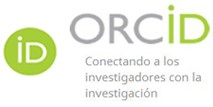Algunas características de las reformas del sistema educativo mexicano y el papel del docente
DOI:
https://doi.org/10.62697/rmiie.v1i1.1Keywords:
Reforma educativa, organización curricular, Nueva Escuela Mexicana, papel del docenteAbstract
Se consideran algunas consideraciones del alcance de las reformas educativas en el currículo mexicano y en particular se hace mención de la normativa que regula la toma de decisiones académicas por parte de los docentes. Se precisa cómo México se ha caracterizado por recibir reformas de manera vertical, “de arriba hacia abajo”, en las que no hay una participación activa de los docentes de los diferentes niveles educativa, los cuales han sido invisibilizados y requieren de un proceso formativo, para trascender en la formación de los estudiantes. Se rescatan los principios orientaciones pedagógicas establecidos en la Nueva Escuela Mexicana, como líneas de acción, y los fundamentos que reivindican el papel del cuerpo docente, lo cuales guían la toma de decisiones académicas, en función de los desafíos sociales que enfrenta el currículo.
Palabras clave:
Reforma educativa, organización curricular, Nueva Escuela Mexicana, papel del docente.
ABSTRACT
Some considerations of the scope of educational reforms in the Mexican curriculum are considered and in particular mention is made of the regulations that regulate academic decision-making by teachers. It is specified how Mexico has been characterized by receiving reforms vertically, "from top to bottom", in which there is no active participation of teachers of the different educational levels, which have been made invisible and require a training process, to transcend in the formation of students. The pedagogical orientation principles established in the New Mexican School are rescued, as lines of action, and the foundations that claim the role of the teaching body, which guide academic decision-making, based on the social challenges facing the curriculum.
Keywords:
Educational reform, curricular organization, New Mexican School, role of teacher.
Downloads
References
Backhoff Escudero, E. (2018). Breve caracterización del Sistema Educativo Mexicano. Revista Latinoamericana de Estudios Educativos, 48(1), 35-52.
Barriga, A. (2014). Curriculum y Educación [Vídeo]. YouTube. https://www.youtube.com/watch?v=lqkwqVzxjw0
Barriga, A., & Espinosa, C. (2001). El docente en las reformas educativas: Sujeto o ejecutor de proyectos ajenos. Revista Iberoamericana de educación, 25, 17-41.
Congreso General de los Estados Unidos Mexicanos. (2020). Programa Sectorial de Educación 2020-2024. Diario Oficial de la Federación. https://www.dof.gob.mx/nota_detalle_popup.php?codigo=5596202
Congreso General de los Estados Unidos Mexicanos. (2019). Ley General de Educación y se abroga la Ley General de la Infraestructura Física Educativa. Diario Oficial de la Federación. https://dof.gob.mx/nota_detalle.php?codigo=5573858&fecha=30/09/2019
Delgado, C. (2019). Las Reformas Educativas para América Latina en el siglo XXI. Multiversidad Mundo Real Edgar Morin. [Vídeo]. YouTube. https://www.youtube.com/watch?v=S1uHSGbFCoc
México. Secretaría de Educación Pública. (2019). La Nueva Escuela Mexicana: Principios y orientaciones pedagógicas. http://dfa.edomex.gob.mx/sites/dfa.edomex.gob.mx/files/files/NEM%20principios%20y%20orientacio%C3%ADn%20pedago%C3%ADgica.pdf
Downloads
Published
How to Cite
Issue
Section
License
Copyright (c) 2022 Alma Griselda Gómez-Ortega, Maritza Librada Cáceres-Mesa

This work is licensed under a Creative Commons Attribution-NonCommercial-ShareAlike 4.0 International License.
Authors who publish in Revista Mexicana de Investigación e Intervención Educativa (RMIIE), of Universidad Pablo Latapí Sarre agree to the following terms:
1. Copyright
Authors retain unrestricted copyright to their work. Authors grant the journal the right of first publication. To this end, they assign the journal non-exclusive exploitation rights (reproduction, distribution, public communication, and transformation). Authors may enter into additional agreements for the non-exclusive distribution of the version of the work published in the journal, provided that acknowledgment of its initial publication in this journal is given.
© The authors.
2. License
The articles are published in the journal under the Creative Commons Attribution-NonCommercial-ShareAlike 4.0 International License (CC BY-NC-SA 4.0). The terms can be found at: https://creativecommons.org/licenses/by-nc-sa/4.0/deed.en
This license allows:
- Sharing: Copying and redistributing the material in any medium or format.
- Adapting: Remixing, transforming, and building upon the material.
Under the following terms:
- Attribution: You must give appropriate credit, provide a link to the license, and indicate if any changes were made. You may do this in any reasonable manner, but not in any way that suggests the licensor endorses or sponsors your use.
- NonCommercial: You may not use the material for commercial purposes.
- ShareAlike: If you remix, transform, or build upon the material, you must distribute your creation under the same license as the original work.
There are no additional restrictions. You may not apply legal terms or technological measures that legally restrict others from doing anything the license permits.












